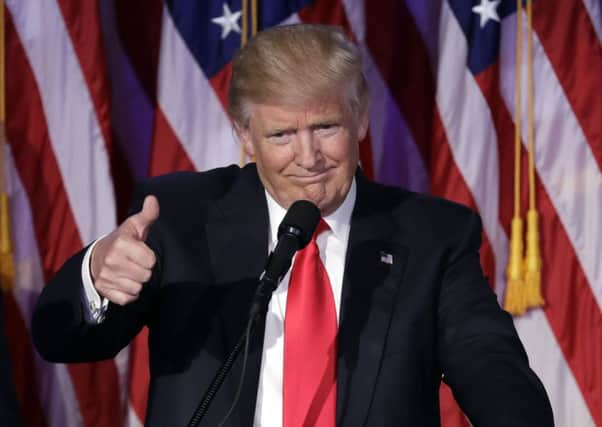Sam McBride: Reassessing staid Stormont, post-Trump


In what now appears to be a global stampede towards populists of the left and right, what are the implications for politics in Northern Ireland?
Initially after May’s Stormont Assembly election, it appeared that this corner of the western world was insulated from the trend which has seen the rise of Syiza, Jeremy Corbyn, Brexit and now Donald Trump. The DUP and Sinn Fein swept back to the top of the Executive. Perhaps the unique Stormont coalition and deep tribal concerns meant that politics here would remain more certain than the rest of the globe?
Advertisement
Hide AdAdvertisement
Hide AdBut buried in the detail there were clues to the potential for radical change, something which Trump’s stunning triumph make more compelling. Perhaps, as with the civil rights movement half a century ago, we are just a few years behind the American curve.
There is a striking feature to a chart of May’s election results: In the column recording the change in votes since the last Assembly election, the top five parties (ie. the governing parties for most or all of the previous five years) are in the red; all lost votes.
By contrast, every other party increased its vote. Two left-wing political minnows - the Green Party and People Before Profit - took four seats between them; up from one in the previous election.
In both cases, those parties presented radical economic and social policies.
Advertisement
Hide AdAdvertisement
Hide AdAlthough nominally on the right, Trump similarly presented himself as a radical outsider who pledged to shake up a broken, corrupt system which was out of touch with working people. Plenty of voters have a similar view of Stormont, even if they have continued to vote for the Executive parties (most of Trump’s voters after all voted for the mainstream Romney four years ago). Jim Allister’s hardline unionist alternative to Stormont has failed to gain widespread support, but does the growth for left wing parties signify that it is there - rather than the unionist right - that voters feel Stormont is unrepresentative?
Turnout in May’s election dipped to 54.9%. Similarly, Trump was elected on a low turnout of about 57%. That means two things: First, the views of those who do vote are disproportionately important to politicians.
Although a man whose actions, words and personal values made him an unlikely hero of the religiously devout, Trump relentlessly courted evangelicals because he knew that they were likely to vote.
Central to that was his pledge to appoint anti-abortion Supreme Court justices, an issue which has parallels to what is likely to be one of the major political battles of this term at Stormont.
Advertisement
Hide AdAdvertisement
Hide AdThe second impact of a low turnout is that if anyone can reach almost half the population who are not voting then they can overturn the system. Many (most recently and lamentably, NI21) have attempted to do just that but it is notoriously difficult. There is evidence that Trump, as with Brexit, got votes from people who had long ago given up on exercising their democratic franchise, and that helped to offset the drop in support for him from some traditional Republicans.
But the unreliability of that sector of the electorate means that the major parties focus on those they know will come out.
That could see the DUP - and perhaps to an extent the SDLP - more determined to retain their socially conservative policies in areas such as abortion, despite polling (and Trump’s victory raises further questions about pollsters’ ability to uncover the truth, particularly where there is a perception that a position is socially unacceptable) suggesting that the wider population is liberalising on such issues.
As a group, older people are far more likely to vote and far more likely to have socially conservative views. If younger people are unlikely to vote, then hard nosed politicians are likely to be relaxed about being out of step with their views, irrespective of social media activity, letter campaigns or protests.
Advertisement
Hide AdAdvertisement
Hide AdUltimately, political leaders radically detached from those they govern are in a precarious position. But politicians generally think in the short to medium term and that means getting re-elected.
At some point, a population which feels it has been forgotten will return to the ballot box, with unpredictable results, and perhaps for a Paisley or Trump-esque character who repudiates political niceties.
May’s Assembly election may contain the seeds of a coming voter revolt But until then the views of those who vote will be disproportionately influential.